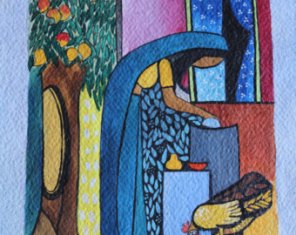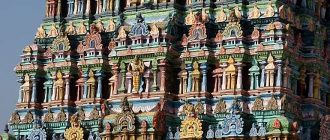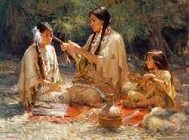Want to learn more about Indian art acrylic paintings? Read on to discover the various elements that make up an Indian art acrylic painting…
Acrylic is a fresher more modern alternative to oil and water colors and people from a wide range of cultures and nations have taken to acrylic to express themselves. We shall look briefly at the mechanics of acrylic paintings and its implementation in Indian art in the following paragraphs.
The Mechanics of Acrylic Painting & Its Differences with Traditional Oil Paints
Acrylic paints became available to artists in the 1950s and became a popular medium to express post modern and popular culture themes in the sixties and seventies. The color pigments in an acrylic paint are suspended in an acrylic polymer emulsion which makes it a true child of the plastic and space age. The paints can be diluted in water but dry very fast and become water resistant.
Acrylic paints can be used to emulate the look of water and oil colors by judicious dilution with water and addition of acrylic based gels or pastes. Diluted acrylic paints can be used to give the smooth brush-stroke free look of watercolor washes. Pigment ratios and particle sizes can be altered to give the gloss and sheen of oil paints, matting agents can be added to dull the finish, and top varnishes can also be applied to round out the oil painting effects.
Acrylic paints are impervious to damage from water and mild solvents; harder solvents such as acetone will tend to remove all paint layers and because of this and the fast drying times, selective removal of layers for artistic or touchup reasons is not practical as it was for traditional paints. Acrylics can bond to a wide variety of surfaces and a very large range of mediums with different binding characteristics can be used to modify the appearance and texture of the paints.
Gel and paste mediums can be used to give a relief effect and the technique of grattage or selective scraping of hardened paint layers is also very effective in acrylic painting. Although acrylic paints can be resistant to other damage from the elements, they tend to crack over time and are not as long-lasting as oils especially given the impossibility of restoration once damage sets in.
Some Indian Artists Using Acrylic as a Medium
Sunita Khedekar is a young Indian artist who graduated from Bombay in 1991 and worked in acrylic and stain-gloss mediums to portray Hindu mythological figures particularly an exhibition on the elephant god Ganesh and his character traits as defined by some of his one hundred eight different names. She also portrayed African art forms and ceremonial masks in acrylic, ceramic, and glass. Since 1999 she has lived in London where she uses acrylic to portray the beautiful English landscapes, traditional architecture, and the English seasons and their changing hues.
Mark Rathiniraj attended the College of Fine Arts in Kumbakonam, Tamil Nadu in the eighties. His artwork is characterized by solid, dark strokes and the brown color of the soil of India and the skin of its people is prominent in his paintings. The artwork looks modern but still very Indian with portrayals of Ganesh, kings, vendors, carpenters, dancers, bull fights, and men and women working the fields.





